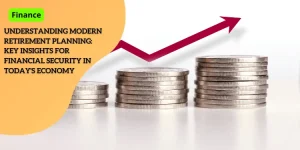US Economy Surges: 233,000 New Jobs and 2.8% GDP Growth Signal Pre-Election Strength

Anúncios
October proved to be a significant month for the U.S. economy, far exceeding expectations and solidifying its strength just before the election.
This encouraging development was marked by the addition of 233,000 jobs, which is more than double what many analysts had predicted.
Anúncios
Job Market Surge
The robust job growth in October highlights the economy’s resilience.
The private sector showed exceptional performance despite potential setbacks like the disruptions from two hurricanes and a major strike at Boeing.
Anúncios
Particularly noteworthy is the upward revision of September’s job gains from an initial estimate of 143,000 to 159,000 jobs, demonstrating an even stronger labor market than previously thought.
 Jobs are the answer to economic change
Jobs are the answer to economic change
GDP Growth
On the back of these job gains, the economy’s gross domestic product (GDP) expanded at an annual rate of 2.8% in the third quarter.
While slightly below the previous quarter’s impressive 3% increase, this growth rate is still notably above the recent trend.
This robust GDP expansion is driven largely by strong consumer spending on goods such as prescription drugs and autos, alongside significant expenditure in healthcare, food, and travel services.
Defense outlays also contributed to the overall spending boost.
Rising Consumer Confidence
Furthermore, consumer confidence saw a remarkable uptick.
The Conference Board’s consumer confidence index rose dramatically to 108.7 in October from 99.2 in September.
This jump—its best monthly gain since March 2021—reflects growing optimism about the current economic conditions among Americans.
The index’s present situation component, measuring consumers’ views on the ongoing economy, surged by 14.2 points to 138, corroborating the positive economic sentiment heading into the year-end.
The intersection of these strong economic metrics sets a solid foundational narrative for the upcoming chapters, which will delve into specific sectors’ performances and consumer spending trends.
Sector-Specific Growth
The job market is showing a vibrant and varied landscape with significant sector-specific growth adding to the economic optimism.
October saw remarkable job additions across several key sectors, and these growth areas play a critical role in the overall economic health.
Education and Healthcare
Education and healthcare sectors together saw an impressive addition of 53,000 jobs in October.
The healthcare industry in particular has been a substantial contributor, reflecting the ongoing demand for medical services and educational improvements.
These sectors are buoying the labor market and underpinning continued economic stability.
Trade and Transportation
Trade and transportation also make a solid contribution with 51,000 new jobs being filled.
This growth likely mirrors the increasing demand for goods and the logistics needed to support not only domestic requirements but also international trade.
In a world increasingly interconnected by supply chains and e-commerce, these sectors are pivotal.
The job surge points not just to growing business activity but also to the physical movement of goods bolstering the economy.
Construction
The construction sector saw notable growth as well, with 37,000 new jobs created.
This is an encouraging sign, suggesting that infrastructure development and real estate projects are on the rise.
Construction is often viewed as a barometer for economic health, given its multiplier effect across related industries, from raw materials to employment.
Manufacturing
Interestingly, the manufacturing sector did not fare as well, with a decline of 19,000 jobs.
This decline marks a contrast to the otherwise positive trends in other sectors and could indicate challenges such as automation, global competition, or shifting supply chains.
It’s a sector to watch, as its performance can significantly impact economic sentiment and policy decisions.
The diversity in job growth reflects the multifaceted nature of the current economic climate.
Each sector’s performance is interwoven with broader economic indicators and consumer behaviors, setting the stage for deeper analysis into consumer spending trends.
Consumer Spending Trends
October saw a rise in consumer spending, particularly in key areas such as prescription drugs and the automotive sector.
These two segments played a significant role in bolstering overall economic performance.
The spike in spending on prescription drugs can be attributed to ongoing health concerns and an aging population, while the automotive sector benefited from pent-up demand and increased consumer confidence.
 Consumers buying more
Consumers buying more
Prescription Drugs and Automotive Sector
Spending on prescription drugs surged, partly driven by the continuous innovations in the pharmaceutical industry and an increasing reliance on medication for chronic conditions.
As Americans become more health-conscious, pharmaceutical companies are seeing greater demand for their products.
The automotive sector also experienced a noteworthy increase in consumer spending.
The success of the automotive industry can be linked to consumers finally acting on their delayed purchase plans from earlier in the year.
Moreover, attractive financing options and promotions further fueled this spending spree.
Services Spending: Healthcare, Food, and Travel
Service industries also saw a considerable boost, with healthcare, food, and travel leading the charge.
Healthcare spending remains robust, supported by the rising need for medical services and a growing awareness of health and wellness.
This sector’s growth aligns with the increased spending on prescription drugs, showing a holistic enhancement in consumer health expenditures.
Food services enjoyed a surge as well, likely reflecting a return to dining out and increased spending on prepared meals.
As restrictions ease and social activities resume, restaurants and food service providers are benefiting from this revival.
The travel industry has been a standout in recent spending trends.
With travel restrictions lifting and consumers eager to resume vacations and business trips, expenditure in this sector has increased significantly.
The uptick in travel directly contributes to other sectors such as lodging, dining, and entertainment, indicating a domino effect on overall economic well-being.
Defense Outlays
Not to be overlooked, defense outlays made a substantial contribution to the overall spending growth.
Military expenditures typically have a significant impact on the economy, driving demand for goods and services across various sectors, from manufacturing to research and development.
The multifaceted growth in consumer spending, spanning from healthcare and automotive purchases to increased defense outlays, showcases the resilience and adaptability of the U.S. economy.
As we move forward, monitoring these spending patterns will be crucial in understanding the underlying robustness of economic activity outside the scope of traditional indicators.
Pre-Election Economic Impact
Despite the robust economic indicators, the economy remains a top concern for voters as Election Day looms.
This period is marked by a significant contrast between the optimistic data and the more negative narratives pushed by some political players.
Voter Concerns
Inflation and the cost of living are at the forefront of voter minds.
Although the economy displays strong performance, these issues continue to weigh heavily on households.
The latest data reveals that consumer confidence has taken a leap, with the index rising from 99.2 in September to 108.7 in October.
This boost is the highest since March 2021, reflecting improved sentiments about the current economic environment.
Resilience Against Predictions
Earlier in the year, many economists predicted a sharp economic slowdown.
However, recent metrics have defied these forecasts.
The addition of 233,000 jobs in October, coupled with upward revisions of the previous month, underscores the labor market’s resilience.
Moreover, the GDP grew by 2.8% in the third quarter, building on a strong second quarter.
This growth has been propelled by increased consumer spending and business investments, showing that the economic engine is still running strong.
Contrasting Narratives
The solid economic performance presents a stark contrast to the negative portrayals by opposition parties.
Former President and his supporters paint a gloomy picture of the economy, but the data tells a different story.
With sectors like education, healthcare, trade, and transportation adding significant jobs, and a notable rise in consumer confidence, the economy shows a positive trajectory that contradicts the naysayers.
Steady Consumer Spending
Consumer spending, a major driver of economic health, has been particularly strong.
There has been increased spending on goods such as prescription drugs and autos, as well as on services like healthcare, food, and travel.
Even defense outlays have contributed to overall spending growth, signaling a multifaceted expansion.
As we round out this overview, it’s clear that the economy’s strong performance plays a pivotal role in pre-election discussions.
The consistency in consumer spending and the robust job market defy earlier slowdown predictions and challenge negative economic narratives.
This sets the stage for ongoing debates and decisions as voters head to the polls.
Read this post about economy and retirement plans.

![Capital Gains Tax on Real Estate: What Home Sellers Need to Know [Complete Guide] Capital Gains Tax on Real Estate What Home Sellers Need to Know [Complete Guide]](https://snewdigi.com/wp-content/uploads/2024/12/Capital-Gains-Tax-on-Real-Estate-What-Home-Sellers-Need-to-Know-Complete-Guide-300x150.webp)




